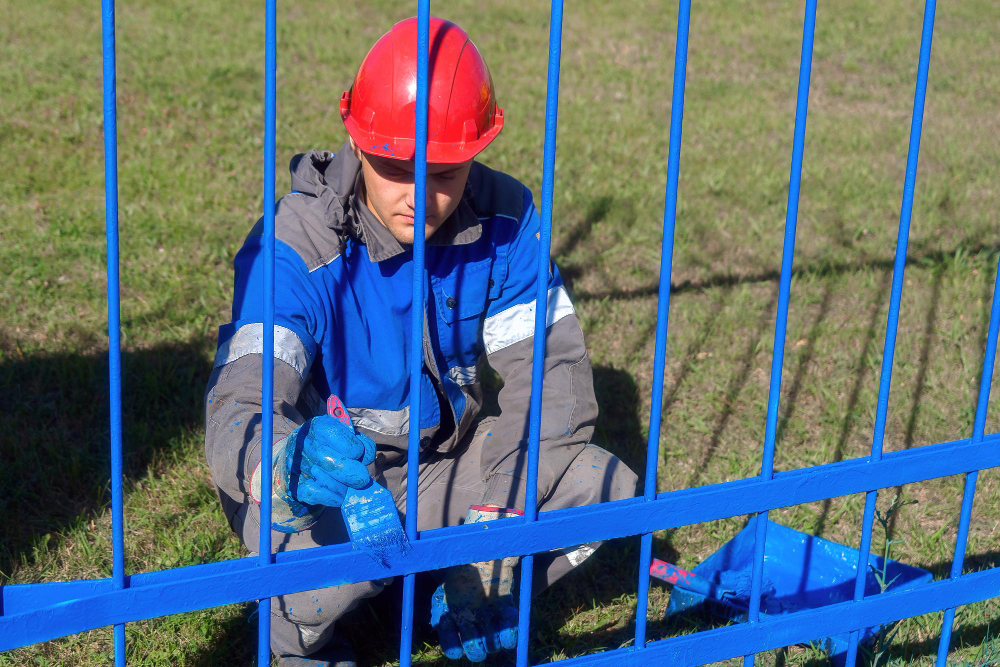
A sturdy fence does more than just mark property lines; it provides security, enhances privacy, and boosts your home’s curb appeal. But over time, even the best fences can fall victim to weather, accidents, or simple wear and tear. When your fence starts to show signs of damage, one of the first questions you'll likely ask is, "How much is this going to cost?"
Understanding the factors that influence the cost of fence repair can help you budget effectively and make informed decisions. This guide will walk you through the various elements that determine repair expenses, from the type of material to the extent of the damage. Knowing what to expect will prepare you for the process and help you find reliable, professional help for your fence repair in Osceola County, FL.
The final price tag for a fence repair job isn't a one-size-fits-all number. Several variables come into play, and understanding them will give you a clearer picture of your potential expenses.
The material your fence is made from is one of the most significant factors affecting repair costs. Different materials have different price points for both labor and replacement parts.
The scope of the repair work is another critical factor. A minor fix will naturally cost less than a major overhaul.
Labor is a substantial part of any repair bill. The complexity of the job, the experience of the contractor, and your geographic location all influence labor rates. In areas like Osceola County, labor costs will be competitive, but it's important to choose a reputable company that doesn't cut corners.
Hiring a professional ensures the job is done correctly and safely. While a DIY approach might seem cheaper, improper repairs can lead to more significant problems and higher costs down the line. A professional will have the right tools, experience, and knowledge to ensure your fence is stable and secure.
The dimensions of your fence also play a role. Taller fences require more material and can be more labor-intensive to repair, especially if posts need to be replaced. Similarly, the length of the damaged section will directly impact the material and labor costs. A repair on a 6-foot privacy fence will generally cost more than the same type of repair on a 4-foot picket fence.
Depending on your location and the extent of the repair, you may need a permit from your local municipality. This is especially true for significant repairs or full replacements. The cost of a permit is an additional expense to factor into your budget. A professional fence company will be familiar with local regulations in Osceola County and can handle the permit process for you.
Let's look at some typical fence issues and what you might expect to pay for repairs. Keep in mind these are general estimates, and your actual cost will depend on the factors mentioned above.
A leaning fence is often caused by a rotted or broken post. This is a critical issue to address, as a weak post can compromise the stability of the entire fence.
Whether from a storm, a fallen branch, or an accident, damaged panels are a common problem.
A malfunctioning gate can be a security risk and a daily frustration. Problems can range from broken hinges and latches to a sagging frame.
Sometimes, the damage to a fence is so extensive that replacement becomes a more practical option than repair. Here are a few signs that it might be time for a new fence:
A professional fence contractor can assess the condition of your fence and provide an honest recommendation on whether to repair or replace it.
Dealing with a damaged fence can be stressful, but understanding the costs involved is the first step toward a solution. By considering the material, the extent of the damage, and labor costs, you can create a realistic budget for your project.
If you need professional fence repair in Osceola County, FL, don't hesitate to reach out to a trusted expert. A reliable company can provide a detailed assessment and a clear estimate, ensuring your fence is restored to its best condition.
For a free, no-obligation estimate on your fence repair project, contact Wulff Fence today. Our experienced team is ready to help you secure your property and restore your peace of mind.